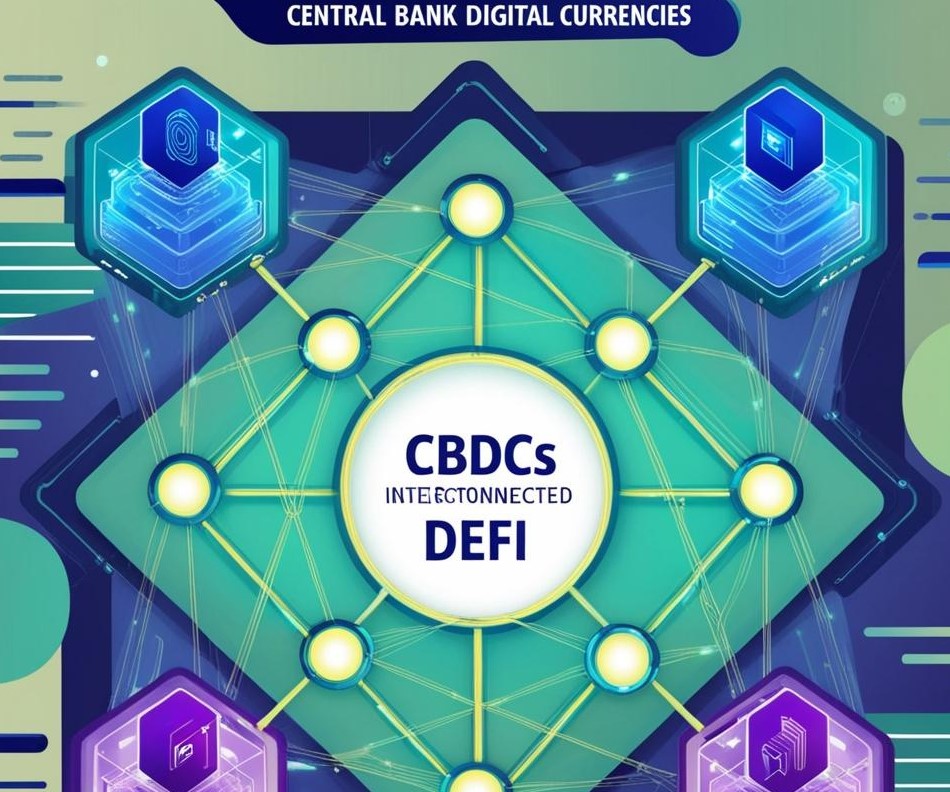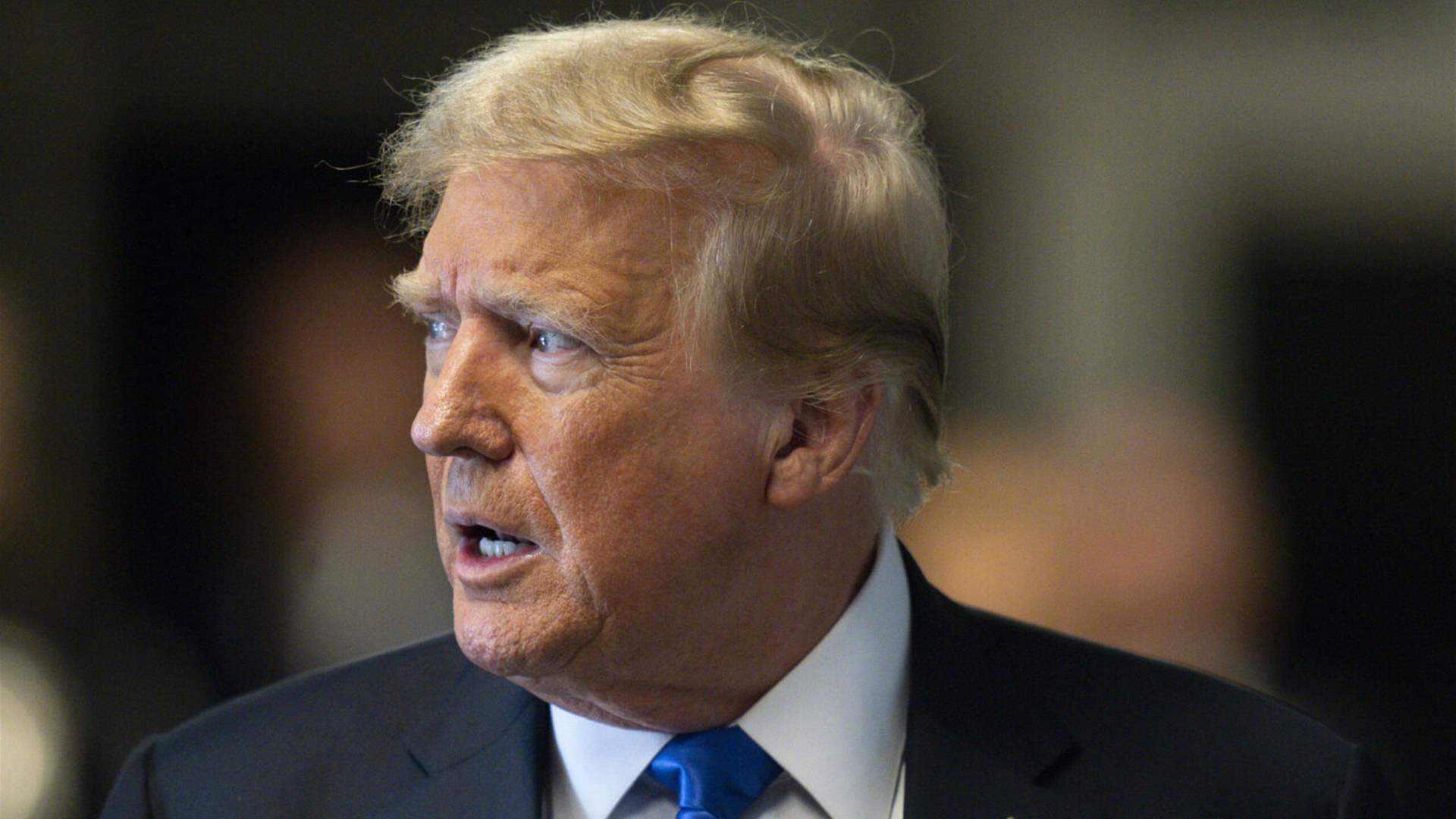While DeFi is lauded for facilitating trustless, intermediary-free transactions, the integration of CBDCs introduces a regulated and potentially stabilizing factor.
Here, we’ll discuss whether CBDCs (centralized digital currencies) can coexist and even benefit decentralized financial systems.
- 1 Table of Contents
- 2 Understanding CBDCs and DeFi
- 3 The Role of CBDCs in a Decentralized Finance (DeFi) Ecosystem
- 4 Challenges of Integrating CBDCs with DeFi
- 5 Use Cases for CBDCs in DeFi
- 6 Case Studies: CBDC-DeFi Collaboration Trends
- 7 The Future of CBDCs in a DeFi World
- 8 Conclusion
Table of Contents
Understanding CBDCs and DeFi
CBDCs: Central Bank Digital Currencies (CBDCs) are digital equivalents of a country’s fiat currency issued and controlled by central banks.
CBDCs, unlike cryptocurrencies such as Bitcoin, are centralized and intended to act as a stable, government-backed form of digital money. They seek to modernize payment systems, enhance financial inclusion, and provide a viable alternative to private digital currencies.
DeFi: Decentralized Finance (DeFi) is a blockchain-based ecosystem that eliminates traditional financial intermediaries, allowing for direct transactions between users.
DeFi uses smart contracts to enable services such as lending, borrowing, and trading while operating without centralized control.
Difference Between CBDCs and DeFi:
Centralization vs. Decentralization: CBDCs are naturally centralized, being entirely controlled by central banks, whereas DeFi is decentralized, relying on blockchain technology and smart contracts for secure operations.
Purpose and Use Cases: CBDCs are designed to provide government-backed economic stability and modernize the financial system, whereas DeFi aims to democratize access to financial services by eliminating the need for banks or regulators.
Accessibility: DeFi is global and available to anybody with internet access, mostly without complex KYC requirements, whereas CBDCs are linked to national monetary systems and are more likely to operate within regulatory frameworks.
The Role of CBDCs in a Decentralized Finance (DeFi) Ecosystem
CBDCs are expected to play an important role in the decentralized finance (DeFi) ecosystem by connecting traditional financial institutions with emerging blockchain-based solutions.
Despite their centralized character, CBDCs can address some existing DeFi issues, providing benefits that could boost adoption, functionality, and trust in decentralized networks. The following is a detailed exploration of the role of CBDCs in DeFi:
- Bridging the Gap Between Traditional Finance and DeFi
- Providing a Stable and Trustworthy Medium
- Strengthening Regulatory Oversight and Compliance
- Enhancing Payment and Settlement Systems
- Driving Innovation in DeFi Use Cases
- Promoting Interoperability Between Ecosystems
Bridging the Gap Between Traditional Finance and DeFi
CBDCs, which are digital representations of fiat currencies issued by central banks, can help users shift from traditional finance to DeFi platforms. This integration enables:
- Seamless fiat-to-crypto transactions: Users can interact with DeFi protocols without using volatile or privately issued stablecoins.
- Enhanced accessibility: CBDCs operating within DeFi ecosystems make it easier for mainstream users and institutions to participate in decentralized markets.
For example, incorporating a CBDC, such as the digital euro, into lending platforms could improve borrowing and lending operations while retaining fiat stability.
Providing a Stable and Trustworthy Medium
DeFi platforms frequently use stablecoins to alleviate the volatility associated with cryptocurrencies. However, private stablecoins are subject to counterparty risk and regulatory uncertainty. CBDCs address these issues by:
- Offering state-backed stability: Their value is tied to national fiat currencies, making them a secure and predictable asset for transactions and collateral.
- Building trust: Central banks’ involvement could entice institutional investors and risk-averse users who would otherwise avoid DeFi due to concerns about unregulated digital assets.
Enhancing Payment and Settlement Systems
CBDCs’ blockchain-based infrastructure can greatly improve payment systems within DeFi by:
- Enabling near-instant settlements: CBDCs allow for near-instant settlements, which reduces operational delays.
- Reducing costs: The absence of intermediaries and dependence on distributed ledgers can reduce fees for cross-border and peer-to-peer transactions.
CBDCs could streamline transfers in cross-border DeFi by lowering the complexity and expense of trading across multiple fiat currencies.
Strengthening Regulatory Oversight and Compliance
One of the accusations leveled by DeFi is a lack of regulation, which can lead to it being a hotspot for criminal activity. CBDCs can increase compliance and monitoring by:
- Embedding regulatory mechanisms: Smart contracts linked to CBDCs can automatically implement Know Your Customer (KYC) and Anti-Money Laundering regulations.
- Facilitating lawful transactions: CBDCs’ traceability matches with government transparency requirements while not jeopardizing DeFi’s overall goals.
Driving Innovation in DeFi Use Cases
CBDCs’ programmable features can open up new applications in the DeFi ecosystem, such as:
- Automated financial instruments: Smart contracts could incorporate CBDCs to enable the smooth execution of financial services such as loans, insurance, and derivatives.
- Tokenized assets: CBDCs can be combined with tokenized versions of traditional assets, such as equities and bonds, to form hybrid decentralized marketplaces.
Promoting Interoperability Between Ecosystems
CBDCs could serve as a universal asset, connecting walled DeFi platforms to traditional financial systems. This interoperability can:
- Promote collaboration: Enables DeFi protocols to interact with traditional banks and payment systems.
- Expand market reach: Give users access to a broader range of financial tools while maintaining liquidity across platforms.
CBDCs, for example, could enable liquidity pools in decentralized exchanges, resulting in consistent trading pairings with low volatility.
Challenges of Integration
CBDCs provide promising potential. However, their integration into DeFi ecosystems is not without challenges:
- Centralization vs. decentralization: Some believe that putting a centralized currency into a decentralized area risks undermining DeFi’s primary principles.
- Technical hurdles: Ensuring interoperability between CBDCs and blockchain networks necessitates strong technological frameworks.
- Privacy Concerns: The traceability of CBDCs might conflict with DeFi users’ need for privacy.
CBDCs play a unique function in the DeFi ecosystem, bridging traditional and decentralized finance. CBDCs can improve DeFi platforms’ functionality and appeal by addressing issues such as volatility, compliance, and accessibility.
However, striking a balance between centralization and the fundamental purpose of decentralization will be key to realizing their full potential. CBDCs and DeFi are likely to coexist as the financial environment evolves, resulting in a hybrid ecology that capitalizes on the best of both.
Challenges of Integrating CBDCs with DeFi
1. Philosophical differences: Centralization vs decentralization
CBDCs are basically centralized, with central banks controlling both issuance and governance. This is in direct contrast to DeFi’s primary principle of decentralization, which operates without intermediaries using open-source protocols and smart contracts.
Integrating a centrally regulated digital currency into a decentralized system results in a philosophical and operational mismatch, potentially compromising DeFi’s trustless nature.
- Impact: Users who value DeFi’s autonomy might oppose CBDCs, seeing them as a tool for financial oversight and control.
- Solution Path: Create hybrid models or frameworks allowing CBDCs to operate semi-autonomously within DeFi ecosystems.
2. Privacy Concerns
CBDCs, which are designed to enable transaction transparency for regulatory purposes, could jeopardize user privacy when used with DeFi networks.
While DeFi transactions are pseudonymous, the involvement of CBDCs may raise surveillance concerns, as central banks may follow user activity to prevent illegal activities.
Major Risks:
- DeFi users will lose their anonymity.
- Authorities could potentially misuse transaction data.
Potential mitigation:
- Privacy-preserving technology, such as zero-knowledge proofs, could allow CBDC transactions to comply with rules while maintaining user confidentiality.
3. Technical Barriers
Integration of CBDCs into DeFi ecosystems presents substantial technical challenges:
- Interoperability: CBDCs, which are frequently built on private or permissioned blockchains, may be incompatible with the public blockchains that support DeFi platforms.
- Scalability Issues: CBDC frameworks might struggle to accommodate the high transaction volumes seen in DeFi, resulting in inefficiencies.
- Standardization: The absence of worldwide standards for CBDC design and operation impedes seamless integration.
Possible solutions:
Blockchain interoperability protocols such as Cosmos or Polkadot can be used to connect CBDCs with DeFi ecosystems.
Central banks and DeFi developers collaborate to produce standardized frameworks.
4. Regulatory Compliance
The inherent unregulated nature of DeFi presents issues for CBDCs, which must adhere to stringent regulatory norms. Integrating CBDCs with DeFi may subject users and platforms to greater monitoring, thereby inhibiting innovation.
- Regulatory Gaps: DeFi’s global reach and absence of jurisdictional boundaries complicate compliance.
- Recommendation: Governments and central banks should set clear regulatory standards to ensure CBDCs can coexist with DeFi while not impeding its expansion.
Use Cases for CBDCs in DeFi
CBDCs have the potential to transform decentralized finance (DeFi) by integrating real-world fiat-backed assets into blockchain ecosystems. Let’s look at their main use cases:
1. Programmable Money:
CBDCs interface with smart contracts to automate financial activities such as conditional payments, recurring subscriptions, and compliance-based transactions.
For example, a business could use CBDCs to automate payroll, triggering payments only when certain conditions, such as time or project milestones, are met.
- Benefit: Eliminates manual operations, lowers errors, and improves operational efficiency.
2. Lending and Borrowing:
DeFi allows customers to use cryptocurrency as collateral for loans. CBDCs could be a more stable collateral alternative due to their fiat backing.
Benefits:
- Stability: Low volatility risks as compared to cryptocurrencies.
- Broader Adoption: Encourages people who are skeptical about cryptocurrency to participate in DeFi lending and borrowing.
Use Case example: a DeFi platform that allows consumers to secure loans with CBDCs rather than volatile crypto tokens.
3. Cross-Border Payments:
CBDCs can reduce the need for middlemen such as banks or SWIFT networks, simplifying international transactions.
Benefits:
- Speed: Payments are settled almost instantly across the globe.
- Lower costs: Elimination of multiple fees associated with traditional remittance systems.
Real-world Implementation:
The e-CNY (Chinese digital yuan) pilot already showed CBDC-powered cross-border payment trials.
4. Stable Liquidity Pools:
CBDCs can serve as a stable asset in liquidity pools, providing less volatility than cryptocurrencies such as ETH or BTC.
Benefits:
- Improved market stability.
- Boosted investor trust in DeFi platforms.
Possible scenario: A decentralized exchange (DEX) that connects CBDCs with native tokens for trading purposes.
5. Compliance and Regulatory Integration
CBDCs can improve regulatory compliance by integrating KYC/AML standards directly into transactions.
Advantages:
- Improved transparency without compromising DeFi efficiency.
- Audit and regulatory reporting have been simplified.
Use Case: A DeFi lending platform that incorporates CBDCs to comply with jurisdictional financial requirements.
CBDCs offer a promising bridge between traditional financial institutions and DeFi’s new capabilities. They could improve the efficiency, stability, and accessibility of decentralized platforms while tackling some of the sector’s most pressing challenges.
Case Studies: CBDC-DeFi Collaboration Trends
Pilot Projects
Several CBDC pilot projects showcase ongoing experimentation with decentralized finance (DeFi).
For example, the Bank for International Settlements (BIS) conducted Project Mariana in conjunction with central banks in France, Singapore, and Switzerland to test cross-border trading and settlement of wholesale CBDCs utilizing public blockchain technology and automated market makers (AMMs).
This project highlighted how DeFi protocols can facilitate real-time, cost-effective foreign exchange operations while also improving financial infrastructure. While experimental, it shows how central banks could utilize DeFi for international financial collaboration.
Similarly, China’s CBDC, the Digital Yuan, has undergone considerable testing in restricted environments, with some exploring integration with smart contracts. This could pave the way for decentralized applications employing a government-backed digital currency.
Private-Public Partnerships
Public-private partnerships are influencing the collaboration between CBDC and DeFi. For example, Hong Kong’s Project Ensemble is collaborating with Brazil’s Drex and Thailand’s Project San to explore tokenization.
These programs aim to develop proof-of-concept solutions for cross-border transactions, such as carbon credit settlements and trade finance. Collaborations between governments and innovators unlock the potential of DeFi.
Global Outlook
Globally, countries are gradually integrating CBDCs with DeFi applications. The European Union and the Reserve Bank of India, for example, are actively looking into ways to include CBDCs in digital economies.
These initiatives aim to achieve seamless interoperability between fiat and DeFi, resulting in enhanced user experiences while retaining compliance and security.
The Future of CBDCs in a DeFi World
Will They Coexist or Dominate?
The relationship between CBDCs and DeFi is predicted to change as central banks and blockchain developers realize the benefits and drawbacks of integration.
CBDCs are centralized by definition, but DeFi thrives on decentralization and autonomy. This dichotomy indicates two plausible scenarios:
- Coexistence: CBDCs could complement DeFi ecosystems by providing a dependable and state-backed digital currency for on-chain transactions, effectively integrating traditional finance and blockchain-based systems.
- Domination: Some analysts believe that governments might leverage CBDCs to create regulatory frameworks that will overshadow or absorb DeFi projects, combining decentralized innovation with centralized monitoring.
Evolving Frameworks: Bridging CBDCs with DeFi
Future frameworks will prioritize interoperability, allowing CBDCs to smoothly integrate into DeFi protocols while remaining subject to central bank regulatory control.
Technological improvements such as layer-2 solutions and decentralized identification systems may improve trust and collaboration across the two paradigms.
Governance models will need to strike a balance between DeFi users’ autonomy and CBDC compliance requirements, creating an environment in which both can thrive.
Global Financial Landscape: A Transformative Shift
CBDCs in DeFi could transform global monetary systems by:
- Standardizing cross-border payments: CBDCs could make international transactions more efficient, eliminating reliance on traditional banking systems.
- Encourage financial inclusion: CBDCs can give banking solutions to unbanked populations through DeFi’s accessibility.
- Enhancing monetary policy: CBDCs enable central banks to undertake precise inflation control and financial stability measures, even in DeFi settings.
Conclusion
Central Bank Digital Currencies (CBDCs) have the potential to play a revolutionary role in the decentralized finance (DeFi) ecosystem by bridging the gap between traditional and blockchain-based financial systems.
CBDCs have the ability to increase liquidity, improve transaction efficiency, and provide a layer of trust, all of which could speed up DeFi adoption.



